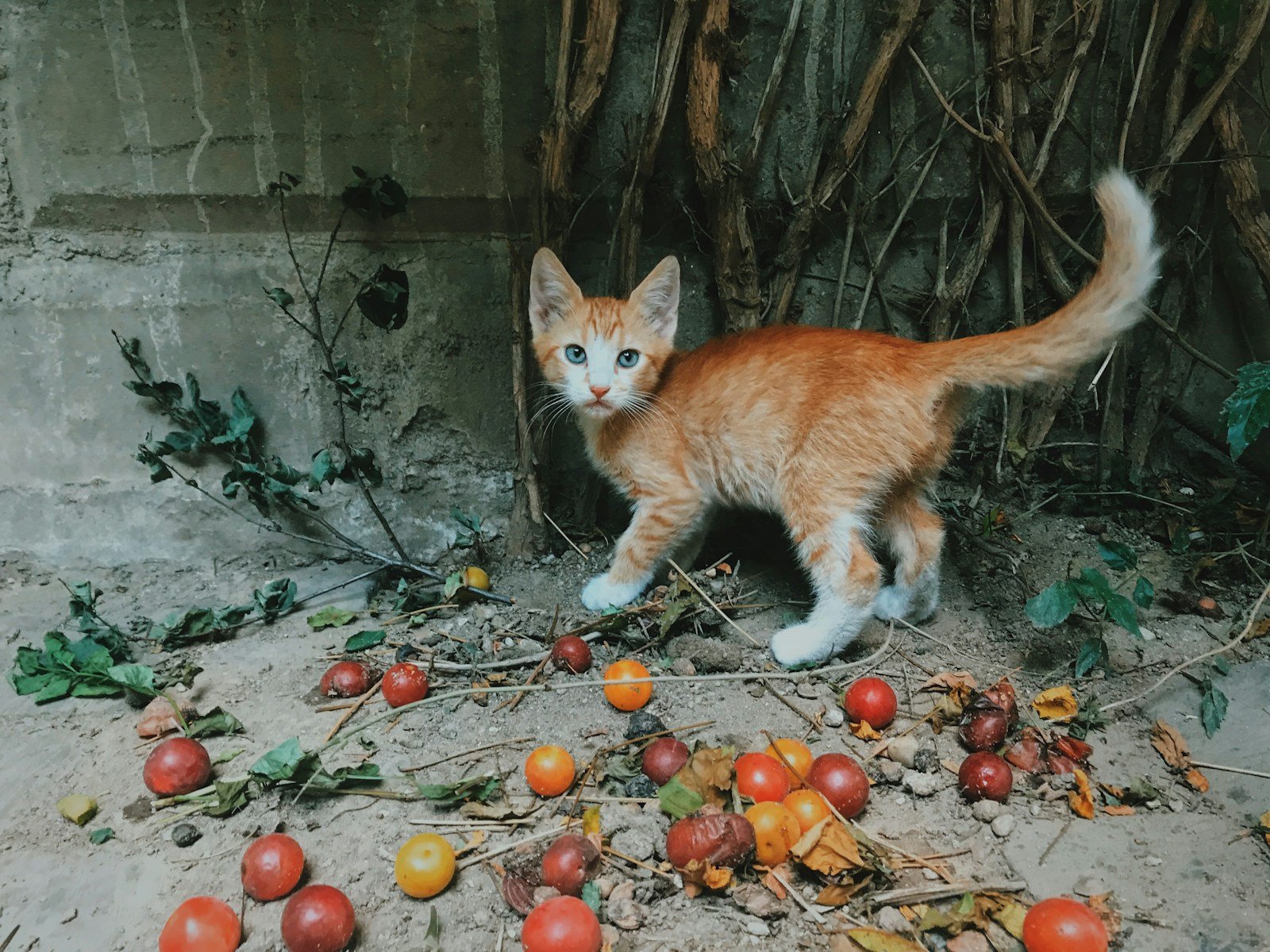Cat Tail Talk, Cats are mysterious creatures, often leaving their human companions guessing about their thoughts and emotions. One of the most expressive parts of a cat’s body is its tail. From subtle twitches to dramatic fluffs, a cat’s tail can convey a wealth of information about its mood and intentions. Understanding cat tail talk can help you better communicate with your feline friend and strengthen your bond. In this comprehensive guide, we’ll explore the various tail movements and what they mean.
The Anatomy of a Cat’s Tail
Before diving into the different tail movements, it’s essential to understand the anatomy of a cat’s tail. A cat’s tail is an extension of its spine, made up of 19 to 23 vertebrae, surrounded by muscles, ligaments, and tendons. This complex structure allows for a wide range of movements, making the tail a versatile tool for communication and balance.

Functions of a Cat’s Tail
- Balance: The tail helps cats maintain balance, especially when navigating narrow or high surfaces.
- Communication: Cats use their tails to express a variety of emotions and intentions.
- Thermoregulation: The tail can help regulate body temperature by dissipating heat.
Common Cat Tail Movements and Their Meanings
1. Tail Up
When a cat’s tail is held high in the air, it usually indicates confidence and friendliness. This position is often seen when a cat approaches its owner or another familiar person or animal. A tail held high can also signify curiosity and interest.
2. Tail Straight Up with a Hook at the End
A tail that is straight up with a slight hook at the end can indicate a friendly greeting. This posture is often seen when a cat is approaching someone it likes and trusts. It can also be a sign of inquisitiveness and playfulness.
3. Tail Quivering
When a cat’s tail quivers or shakes slightly while held upright, it is usually a sign of excitement or anticipation. This behavior is often observed when a cat is about to receive a treat or when it sees someone it loves. In some cases, it can also indicate that a cat is marking its territory.
4. Tail Puffed Up
A puffed-up tail is a classic sign of a frightened or agitated cat. When a cat feels threatened or scared, the fur on its tail stands on end, making the tail appear larger and more intimidating. This is a defensive posture designed to ward off potential threats.
5. Tail Low and Tucked Under
A tail that is held low or tucked between the legs is a sign of fear or submission. Cats often adopt this posture when they feel threatened, anxious, or uncomfortable. It’s a way of making themselves appear smaller and less noticeable.
6. Tail Wagging or Thumping
Unlike dogs, cats often wag their tails when they are annoyed or irritated. A slow, deliberate wag can indicate that a cat is feeling agitated or unsure. If the wagging becomes more vigorous, it can be a sign that the cat is becoming increasingly upset and may be preparing to lash out.
7. Tail Flicking
A flicking tail, where the tip of the tail moves back and forth rapidly, often indicates excitement or agitation. This behavior can be seen when a cat is stalking prey, playing energetically, or feeling overstimulated. It can also be a sign of frustration.
8. Tail Wrapped Around Another Cat or Person
When a cat wraps its tail around another cat or a person, it is usually a sign of affection and bonding. This behavior is akin to a human putting an arm around a friend. It signifies trust, comfort, and companionship.
9. Tail Held Diagonally
A tail that is held at a diagonal angle can indicate a neutral or relaxed state. Cats often adopt this posture when they are calm and content but not particularly excited or agitated.
Understanding the Context
While tail movements can provide valuable insights into a cat’s mood and intentions, it’s essential to consider the context and other body language cues. Cats communicate using their entire bodies, including their ears, eyes, and overall posture. Here are some additional body language signals to help you interpret your cat’s tail talk more accurately:
Ear Positions
- Ears Forward: Indicates interest or curiosity.
- Ears Flattened: Suggests fear, aggression, or defensiveness.
- Ears Swiveling: Shows that the cat is alert and listening to its surroundings.
Eye Expressions
- Dilated Pupils: Can indicate excitement, fear, or arousal.
- Slow Blinking: Signifies relaxation and trust.
- Staring: Can be a sign of dominance or aggression.
Body Posture
- Arched Back: Often indicates fear or aggression.
- Relaxed Posture: Signifies contentment and calmness.
- Crouching: Can indicate readiness to pounce or a defensive stance.
Vocalizations
- Purring: Usually a sign of contentment, though it can also occur when a cat is in pain or anxious.
- Meowing: Can convey a variety of messages, including greetings, requests, or complaints.
- Hissing and Growling: Indicate fear or aggression.
How to Respond to Your Cat’s Tail Movements
Understanding your cat’s tail movements is just the first step; knowing how to respond appropriately can enhance your relationship and ensure your cat feels secure and happy. Here are some tips on how to respond to different tail movements:
1. Tail Up
If your cat approaches you with its tail held high, respond with gentle petting and affection. This reinforces positive behavior and strengthens your bond.
2. Tail Quivering
A quivering tail often indicates excitement or anticipation. Engage with your cat by offering a treat, initiating playtime, or providing affection.
3. Tail Puffed Up
If your cat’s tail is puffed up, it is likely scared or agitated. Give your cat some space and avoid sudden movements or loud noises that might exacerbate its fear.
4. Tail Low and Tucked Under
A low or tucked tail indicates fear or submission. Provide a safe and comforting environment, and try to identify and remove any stressors that might be causing your cat’s anxiety.
5. Tail Wagging or Thumping
If your cat is wagging its tail, it may be feeling annoyed or irritated. Give your cat some space and avoid handling it until it calms down.
6. Tail Flicking
A flicking tail can indicate excitement or frustration. Engage in interactive play to help channel your cat’s energy, but be mindful of overstimulation.
7. Tail Wrapped Around Another Cat or Person
A cat wrapping its tail around you is a sign of affection. Respond with gentle petting and verbal praise to reinforce the bond.
Creating a Tail-Friendly Environment
To ensure your cat feels comfortable and secure, it’s important to create an environment that caters to its needs. Here are some tips for creating a tail-friendly environment:
1. Provide Safe Spaces
Cats need safe and secure spaces where they can retreat and feel protected. Provide cozy hiding spots, such as cat trees, covered beds, or designated quiet areas in your home.
2. Enrichment Activities
Engage your cat with a variety of enrichment activities to keep it mentally and physically stimulated. This can include interactive toys, puzzle feeders, and regular play sessions.
3. Respect Personal Space
Respect your cat’s personal space and avoid forcing interactions. Allow your cat to approach you on its terms and observe its body language to gauge its comfort level.
4. Regular Veterinary Checkups
Regular veterinary checkups are essential to monitor your cat’s health and address any underlying issues that might affect its behavior. Tail movements can sometimes indicate health problems, so it’s important to stay vigilant.
Conclusion
Cat tail talk is a fascinating aspect of feline communication that offers valuable insights into your cat’s emotions and intentions. By understanding the various tail movements and their meanings, you can better interpret your cat’s behavior and respond appropriately. This not only enhances your bond but also ensures your cat feels secure, happy, and understood.
Cats are complex creatures with a rich array of behaviors that can sometimes be puzzling. However, by paying attention to their signals and learning to interpret their tail language, you can create a more harmonious and fulfilling relationship with your cat. So the next time your cat wags, flicks, or quivers its tail, you’ll be better equipped to understand its emotions and respond in a way that enhances your bond.
Discover more from EMMOCEB
Subscribe to get the latest posts sent to your email.






